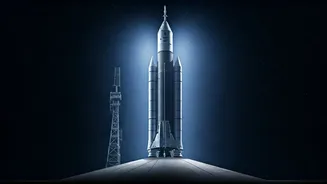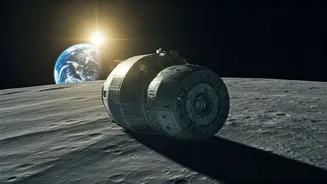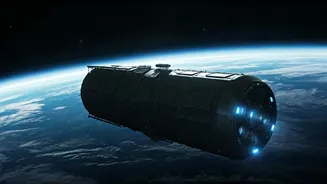Orion's Installation Complete
The Artemis II mission has achieved a vital milestone with the complete installation of the Orion spacecraft, known as Integrity, onto the Space Launch
System (SLS) rocket. This integration represents a key phase in the preparation for a crewed lunar orbit mission, which is the first of its kind in over half a century. The Orion spacecraft, designed to house a crew of four astronauts, will be their command center and life support hub throughout the approximately 10-day journey circling the Moon. Sean Duffy, the acting NASA Administrator, highlighted the importance of connecting Orion to the SLS, bringing the mission closer to its planned launch in early 2026. This crucial step is the culmination of years of collaborative engineering and meticulous coordination between NASA and its various contractors, demonstrating a shared commitment to deep space exploration.
Inside the Orion
The Orion spacecraft is equipped with cutting-edge technology to ensure the crew's safety and operational efficiency during its lunar orbit. Inside the capsule, there are specialized zones designed for maximum radiation shielding, protecting astronauts from cosmic rays and solar radiation, which is essential for extended space missions. Orion will provide life support, navigation, and communication capabilities throughout the mission. This allows the crew to focus on testing systems critical for upcoming lunar expeditions and future spaceflights. They will be testing equipment and the spacecraft's performance, as well as gathering vital data on the effects of long-duration spaceflight on the human body, setting the stage for future missions.
Mission's Exploration Goals
The Artemis II mission is a crucial step for achieving NASA's lunar exploration goals. This mission marks NASA's inaugural crewed flight test of the Orion spacecraft combined with the SLS rocket. The success of Artemis II will provide essential insights into navigation, life support systems, and the demands of extended lunar missions. It will demonstrate that NASA is prepared to re-establish a long-term human presence around the Moon, supporting not only lunar exploration but also setting the stage for crewed missions to Mars. The Artemis program aims to create sustainable exploration through technological innovation, testing, and international partnerships. With Artemis II, the agency is progressing towards a new era of lunar exploration, paving the way for eventual human missions to Mars.
Years of Dedication
The successful stacking of the Integrity spacecraft onto the SLS rocket symbolizes the culmination of years of hard work and significant technological innovation within the Artemis program. Lockheed Martin, the primary contractor responsible for the construction of Orion, has confirmed the spacecraft's full integration and readiness for the final pre-launch checks. This milestone is a testament to the collaborative efforts of numerous teams working diligently to design a spacecraft capable of supporting human life in the demanding environment of deep space. The Artemis program embodies NASA's dedication to advancing space exploration through sustainable technology, rigorous testing, and international cooperation. Artemis II brings us closer to a new era of lunar exploration, ultimately paving the way for human missions to Mars and beyond.












